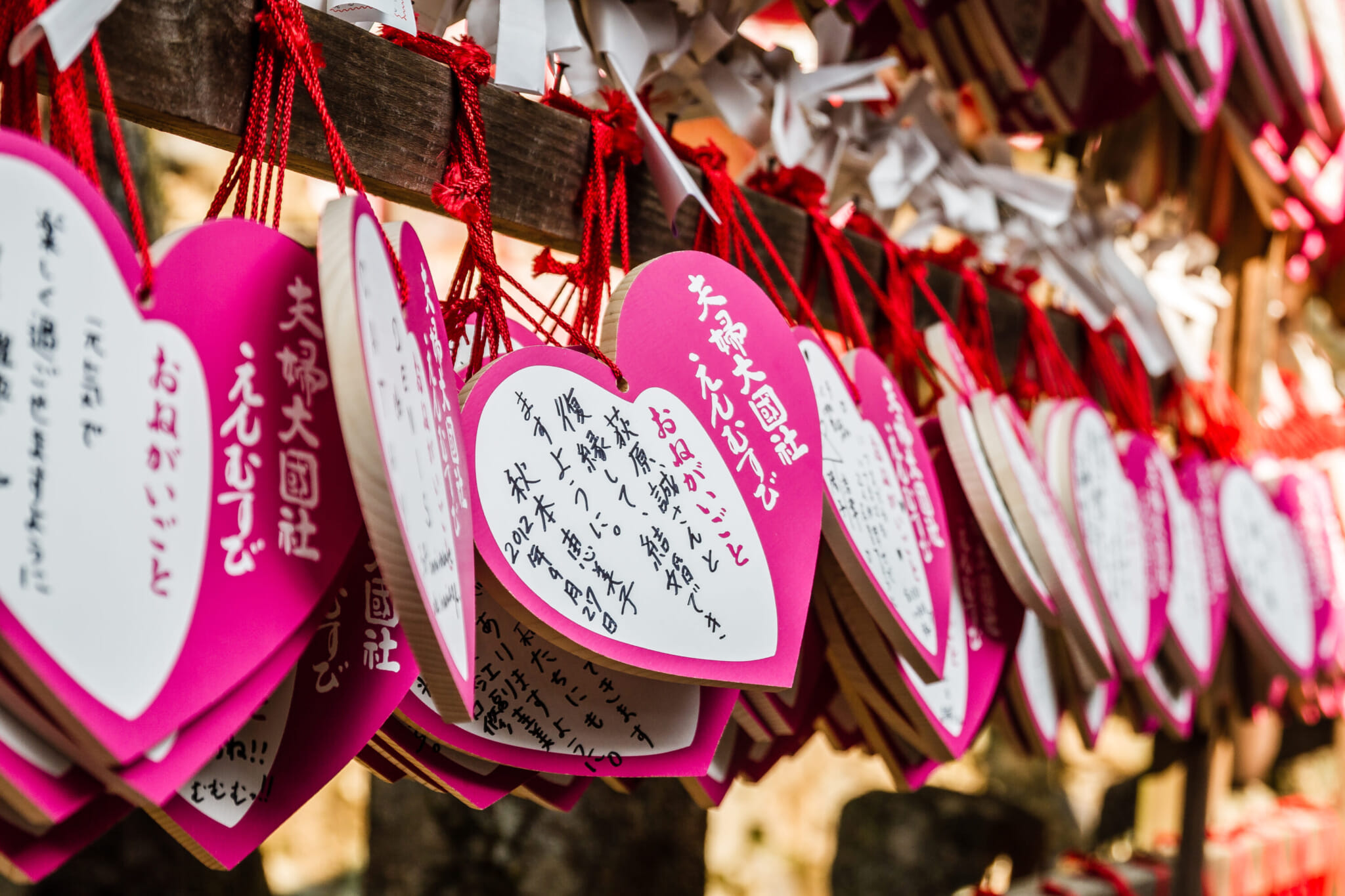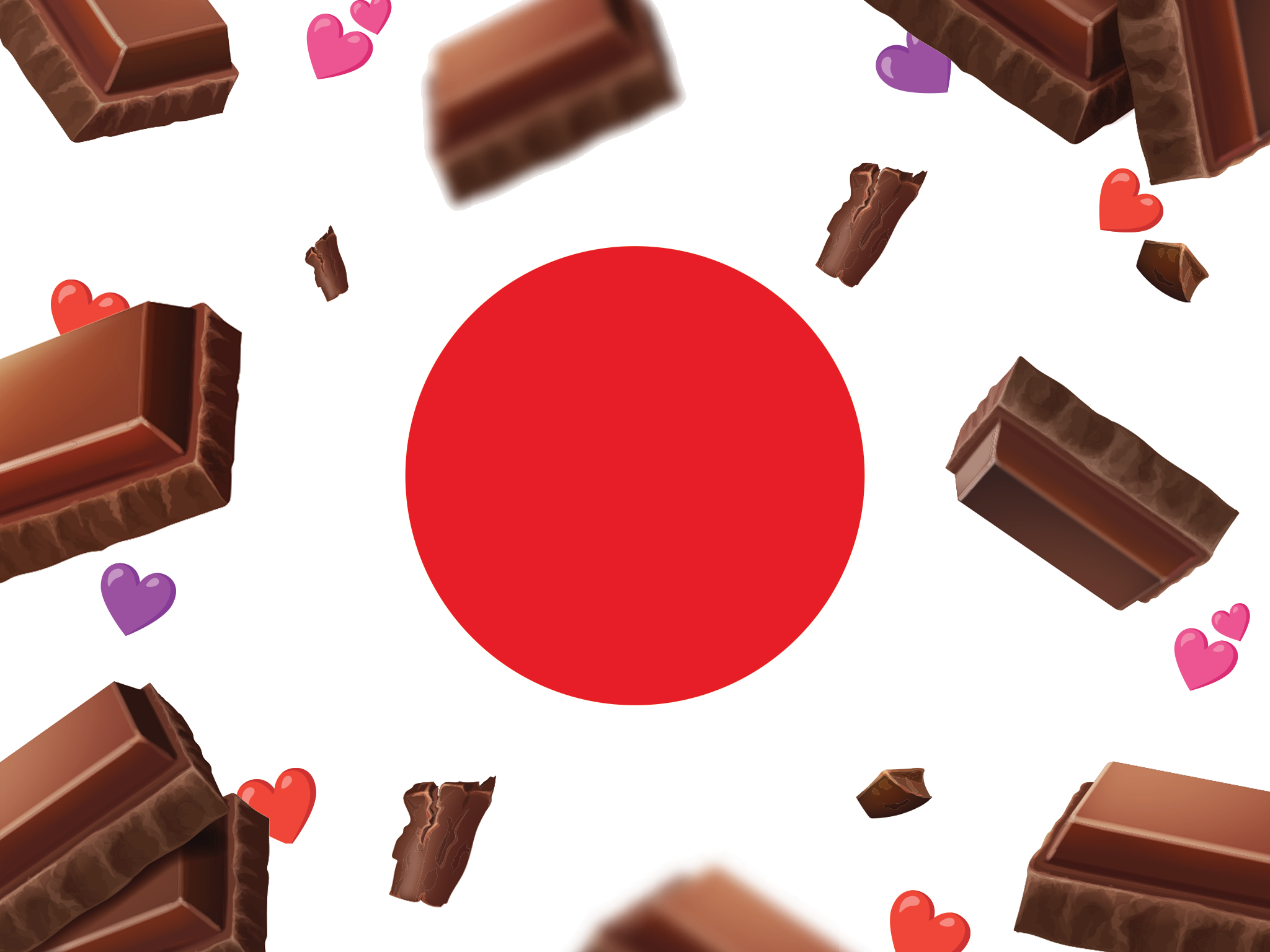The Evolution of Valentine’s Day in Japan
The earliest instance of Valentine’s Day in Japan came in 1935, when chocolate brand Morozoff, run by a Russian national out of Kobe, consciously decided to introduce the custom to the country. Morozoff began selling chocolate packaged in heart-shaped boxes, marketing them as sweethearts, “to show your love with chocolate.”
At the time, chocolate was rarely consumed by Japanese folks, so the company took out a huge advertisement in a newspaper aimed at foreigners in Japan, proclaiming “A heart full of Morozoff’s sweets.” The company continued advertising in the same newspaper for a number of years. Yet despite this long-running ad reaching out to the expat community, the custom barely registered among Japanese people.
Postwar Valentine’s Day
After the war, when America occupied Japan, sugar started to become more popular. An employee at a Shibuya chocolate firm called Mary’s Chocolate Company received a gift from a friend in Paris, explaining the custom of Valentine’s Day in the West. As the story goes, this friend introduced the idea of showing love or appreciation by presenting a gift such as flowers or chocolate.
Aha. The employee hit upon a great marketing idea: the perfect way to flog a lot of chocolate in one go. Mary’s Chocolate prepared its normal bars and sold them at Japan’s first Valentine’s Fair between February 12 and 14 in 1958. Alas, it was a dismal failure. Only three ¥50 chocolate bars were sold, along with one ¥20 message card.
Unperturbed, the firm returned the year after, selling personalized chocolates. For an extra fee, the giver could have the name of their choice engraved directly onto the newly heart-shaped slabs of chocolate. They sold out.

Bubble Era and Women Empowerment
Mary’s Chocolate also began placing targeted adverts in women’s magazines, which was an exponentially growing market around that time. The ads asked, “How do you think he’ll react, perchance?” alongside an explainer saying that Valentine’s Day is a opportunity to flip the tables and for women to state their own kokuhaku or confession of love. Traditionally, a kokuhaku was only proclaimed by men and any women doing so would be considered vulgar. These bold adverts by the chocolate company (and the self-empowerment message of women’s magazines), gave females an excuse to admit they had a crush on someone. Unsurprisingly, the trend began to gain traction, buoyed by companies and department stores, which took it as a novel way to sell more expensive chocolate.
Yet it wasn’t until the 1970s that the trend became a custom. Japan was in its bubble era. Women had entered the workforce and were earning for themselves, meaning they could splash out on chocolates as confessions of love, without wondering what their husband may think. Those who weren’t yet attached — but wanted to be — could afford elaborate chocolates to express their real emotions. This chocolate became known as honmei-choco.
Present day: Changing Valentine’s Customs
Gradually, as kokuhaku became acceptable for any gender, different types of chocolate gifts evolved. Chocolate for your love was joined by chocolates for male coworkers to show “appreciation,” and then chocolates for friends (tomo-choco), as well as chocolate for yourself (jibun-choco) to practice self-love.
Recently, more and more women are denouncing obligation chocolates (giri-choco) for coworkers and some companies have even banned the practice outright. In 2018, Godiva, one of the more high-end chocolate makers, made headlines for its full-page ad in one of Japan’s largest newspapers, saying that “women should stop giving out giri-choco.”
Recent studies have shown that, alongside heightened awareness of gender-equality and gender roles, giving giri-choco is decreasing in favor of jibun-choco and tomo-choco.
White Day
White Day is a specific Japanese concept, claimed to be invented by candy company, Ishimura Manseido, in 1976. After reading a letter from a woman complaining about Valentine’s Day in a magazine, an executive at the firm felt a day for men to give something white back to the women who gifted them chocolate would be well received. White Day was subsequently born. It occurs on March 14, exactly one month after Valentine’s Day.

How Does Japan Celebrate Valentine’s Day?
Just like any country which observes the custom, there are several ways to celebrate Valentine’s Day in Japan.
Valentine’s Day Gifts
Chocolate and Flowers
The custom was started in Japan by chocolate companies and remains very much themed around chocolate. But other gifts are normal as well. Flower shops get in on the custom too. As do department stores, with various kinds of heart-shaped goods coming out in February.
Experiences
Recently, sit-down Valentine’s Day gifts have become increasingly popular. In 2024, department stores such as Matsuya Ginza and Takashimaya in Shinjuku are pushing eat-in experiences to direct customers to their cafés and restaurants. The Matsuya Ginza store has a ¥1,650 limited Valentine’s chocolate ice cream. Over at Takashimaya, a reservation-only experience offers the chance to watch pastry chefs make your dessert in front of your eyes. A reason for this shift may be to encourage customers to spend more money in one go. Quality, not quantity, as the saying goes.
Prayers
Some shrines in Japan offer heart-shaped prayer tablets, upon which couples write their wishes and tie them onto the shrine for those wishes to be granted.
Handmade goodies
Many Japanese mother-daughter combinations make their own chocolates to give to the men in their lives. The idea of hand-making or even baking is thought to indicate a deep love and is usually appreciated by the receiver.
Events
Unsurprisingly, there are a myriad of Valentine’s-themed events to appeal to you at any point in your love(less) life.
Dinner
The main hotels usually offer Valentine’s-themed dinners, lunches and menus for you and your loved one or Valentine’s partner to enjoy. Check the Tokyo Weekender Events calendar for more details.
Dancing
There are various clubs where you can dance the night away.
Love Hotels
Love hotels take the chance to capitalize on their own holiday — after all, what says Valentine’s like love, hey. Even if it’s just the name.









